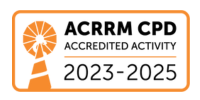Excision is routine work in primary care, but deciding who should wield the scalpel isn’t always...
.jpg?height=200&name=HCE%20HubSpot%20blog%20images%20600x350%20(22).jpg)
Gain advanced knowledge in dermoscopy for the diagnosis and management of common skin conditions.
/FADFD.webp)
Explore the use of dermoscopy for obtaining clinical diagnoses for conditions of the skin, nails, hair, and scalp. Differentiate between common dermatoses and assess the effectiveness of applied treatments.
- Delivered by the world's leading experts in dermoscopy and dermatology.
- This advanced course requires practitioners to have previous exposure to dermoscopy prior to enrolment.
- This course is for physicians.
100% online
$495
Special rates available
40.5 hrs
Self-paced
Professional Certificate of Dermoscopy >
- Learn to use dermoscopy as a tool to aid the clinical diagnosis of general dermatology conditions, including inflammatory skin diseases like psoriasis and dermatitis.
- Differentiate dermatoses and skin cancer.
- Confidently identify conditions of the hair, scalp, and follicles using dermoscopy.
- Track and improve the efficacy of applied treatments.
- Accurately assess conditions in skin of colour.
Get unlimited access to all course content, additional learning materials, ongoing post-course support, and more.
This module focuses on the use of dermoscopy using these five parameters to guide diagnosis: vessels, scaling, follicular findings, other structures and specific clues. The module looks at the dermoscopy of papulosquamous skin diseases like psoriasis and dermatitis as well as common facial inflammatory skin diseases, including rosacea and discoid lupus erythematosus. It includes dermoscopic findings, pathologic correlation and treatment options. The important morphologic parameters on dermoscopy are evaluated. The module concludes with an explanation of how to diagnose hair and scalp diseases using trichoscopy and supported by illustrations and clinical examples of several hair and scalp skin conditions.
This module looks at the main difference between dermoscopy of inflammatory dermatoses and dermoscopy of skin cancer. The benefits of inflammoscopy are explained and the five parameters to be evaluated (vessels, scaling, follicular findings, other structures and specific clues) are listed. Differentiation between common papulosquamous dermatoses is explained and examples of the different conditions are given. The two-step approach for inflammatory dermatoses is given - the collection of clinical data and setting of dermoscopic diagnosis and the incorporation of dermoscopic data. The module concludes with a number of patient cases taking into account the efficacy of the applied treatment by using dermoscopic and photographic examples of several skin conditions.
This module describes trichoscopy and evaluates the important morphologic parameters of trichoscopy. A comparison is made between dry trichoscopy and trichoscopy with immersion fluid. The appearance of different types of hair shafts and hair follicles are described. This includes criteria to assist with investigations and demonstrates the morphological changes to hair follicles and hair shafts that assist diagnosis of hair problems. Clinical images support module learning. The final section of the module looks at pathological findings including examples of hairpin elongated vessels, arborising vessels, glomerular vessels and thick arborising vessels.
This module commences with outlining the major forms of melanin and relevance when using dermoscopy. Melanoma facts and a checklist for people with skin of colour are listed. The dermoscopic features of basal cell carcinoma and squamous cell carcinoma are given and illustrated using dermoscopic images throughout to show the different classifications. Attention is also paid to inflammatory dermatoses and pigmentary disorders in people of colour and how to diagnose these conditions. This is supported by numerous clinical examples of different skin conditions. The module concludes with a focus on detecting melasma and ochronosis.


Dermatologist-Venereologist, First Department Of Dermatology, Aristotle University, Greece
President, International Dermoscopy Society
Aimilios Lallas is an Associate Professor of Dermatology at the First Department of Dermatology of Aristotle University in Thessaloniki, Greece. He is specialised in skin cancer diagnosis with non-invasive techniques, as well as in the management of skin cancer patients.
His main field of research interest is dermoscopy of skin tumours, the application of the method in general dermatology and the improvement of the management of oncologic patients. He is an author of more than 330 scientific papers published on Pubmed Central, most of them on dermoscopy and skin cancer. He is an editor of eight books and author of several book chapters on dermoscopy. He is a co-investigator in several Phase III Clinical trials on skin cancer treatment. He has been awarded several scholarships and scientific awards.
Over the last years, A/Prof Lallas has established scientific collaboration with numerous colleagues from several countries and has supervised the training of numerous fellows from different countries. He is an invited speaker in several domestic and international congresses and meetings, mainly on dermoscopy and on skin cancer diagnosis and management. He is particularly involved in teaching activities on dermoscopy, having organised and participated in numerous domestic and international courses.
A/Prof Lallas is currently the President of the International Dermoscopy Society.

Assistant Professor, Director, Cutaneous Lymphoma Program, Department of Dermatology, Michigan Medicine, University of Michigan
Director, Teledermatology services, Faculty Associate, Department of Dermatology, Michigan Medicine, University of Michigan
Chief of Dermatology Service, Ann Arbor Veteran Health
Trilokraj Tejasvi is an Assistant Professor, Director, Cutaneous Lymphoma Program, Director, Teledermatology services, Faculty Associate, GLOBAL REACH at Department of Dermatology, Michigan Medicine, University of Michigan, Ann Arbor, USA. He is also Chief of Dermatology Service for the Ann Arbor Veteran Health services.
A/Prof Tejasvi’s main research interest is teledermatology, technology, and imaging of skin, including dermoscopy, confocal microscopy. He has published 52 peer-reviewed journals and publications, including those in Nature Genetics, the Journal of Dermatology, the Journal of Investigative Dermatology, and the American Journal of Human Genetics. He is the current chair of the Teledermatology SIG, American Telemedicine Association, and vice-chair of the Teledermatology Taskforce, American Academy of Dermatology.

First Dermatology Department of the Aristotle University of Thessaloniki
Dr Zoe Apalla was board certified in dermatology in 2008 at the Aristotle University of Thessaloniki, Greece. She was trained in dermatopathology at the St John’s Institute of Dermatology in London in 2010 and obtained her PhD degree at the Aristotle University of Thessaloniki in 2013.
Zoe has worked as a consultant in the First Dermatology Department of the Aristotle University of Thessaloniki since 2010. She oversees the Supportive Oncology Outpatient Clinic and the Skin Cancer Outpatient Clinic, and the department’s dermatopathology laboratory. She also holds General Dermatology and Inflammatory Dermatoses Outpatient Clinics.
Zoe’s main research fields include skin oncology, melanoma and non-melanoma skin cancer, topical treatments, photodynamic therapy and dermatoscopy. She has published more than 100 peer-reviewed scientific articles in international journals and has lectured at many international and national congresses and meetings.
Bundle two courses and save 5%, or three courses and save 10% upon enrolment.
Talk to us about deferred payment options, registrar scholarships and special rates.
*For Australian residents only: Online course prices are shown exclusive of GST. If you are GST-registered, please enter a valid ABN at checkout to ensure GST is not applied. Otherwise, 10% GST will be added at checkout. View our FAQ for more information.
/FADFD-1.webp?width=680&height=500&name=FADFD-1.webp)
An excellent course introduction to dermoscopy and applying this in clinical practice. Great lectures and supporting materials.
Dr S. Jan
Excellent! This is a great course. The course was clearly presented, with good pictures and course book. All HealthCert's skin cancer courses have been hugely valuable to my practice!
Dr R. Mundell
I highly recommend this course. I increased my knowledge and developed confidence in using dermoscopy in diagnosing skin lesions. Every skin lesion I see means so much more now that it has a name. Great involvement from various experts and great videos and reference materials.
Dr P. Ishri
I really enjoyed the level of learning. It is very rewarding to know that I am potentially saving lives.
Dr K. Laverty
| RACGP Activity Number | ACRRM Activity Number | Activity Title | Education Hours | Performance Hours | Outcome Hours | ||
|---|---|---|---|---|---|---|---|
| 491153 | 31297 | Dermatoscopy in skin of colour | 491153 | 31297 | 4.5 | 6 | 0 |
| 491128 | 31289 | Basic principles of applying dermoscopy in general dermatology | 491128 | 31289 | 4.5 | 6 | 0 |
| 491133 | 31290 | Common inflammatory dermatoses of the face and trunk | 491133 | 31290 | 4 | 6 | 0 |
| 491140 | 31293 | Basic principles of trichoscopy | 491140 | 31293 | 3.5 | 6 | 0 |
| Total hours | 16.5 | 24 | 0 | ||||
View the CPD Hours for all HealthCert Education activities.
HealthCert Education provides a variety of Outcome Measurement activities to suit your needs. Please contact an Education Advisor for more information.
The Medical Certificate of Dermoscopy for Dermatology is an advanced course tailored for physicians who wish to increase their knowledge and clinical application of dermoscopy in dermatology. The course assumes previous knowledge and experience of dermoscopy. The HealthCert Professional Certificate of Dermoscopy (or similar qualification) provides this knowledge.
Participants do not have to pass an IELTS test but, as the courses are delivered in English, proficiency in listening, reading and writing English is assumed.
Participants will require access to a computer/laptop, an internet connection and a basic level of technology proficiency to access and navigate the online learning portal.
Professionally recognised qualifications and prior studies may be recognised for entry into this course if the learning outcomes match exactly. Please ask a HealthCert Education Advisor for an individual assessment of your prior qualifications and experience.
Upon successful completion of this course, participants will receive a Medical Certificate of Dermoscopy for Dermatology and CPD hours.
This certificate course:
To learn more about the delivery of certificates in Australia and overseas, please visit our FAQs.
Professional Diploma Pathway
You may be interested in the HealthCert three-part Professional Diploma program in Dermoscopy.
This organisation is an RACGP-accredited CPD provider under the RACGP CPD Program.



Don't see your question? Explore other faqs or talk to us.
Fees will vary based on the program and study option selected (fully online vs online + optional practical workshop). Payments can be made upfront or in monthly instalments. Special rates and various payment options are available. GP registrars and doctors in training enjoy a scholarship of up to $500. Talk to us to learn more.
Completion of any HealthCert course or attendance at an event will enable you to access the HealthCert Alumni Program which includes:
HealthCert Education is pleased to issue digital credentials for alumni. Digital credentials are a permanent online record of your successful completion of a HealthCert course and are issued to all course participants in addition to PDF certificates. If you are based in Australia, you also have the option to order a hard copy of your digital certificate for a small additional fee.
The recommended study duration of this certificate course is 40.5 hours, which includes study of the pre-course activities and readings, online lectures, live tutorials, and online assessment. This self-paced course offers the flexibility of 100% online study in your own time, at your own pace, in your own home or office, with no mandatory face-to-face requirements. You are not required to be online at specific times but can view and replay video lectures at your convenience.
All HealthCert courses meet World Federation of Medical Education standards. This certificate course qualifies for CPD hours from the Royal Australian College of General Practitioners (RACGP) and the Australian College of Rural and Remote Medicine (ACRRM) in Australia. It is recognised by the Royal New Zealand College of General Practitioners (RNZCGP) in New Zealand. It is recognised by the Hong Kong College of Family Physicians (HKCFP) in China. It is a self-submitted activity in Dubai and the United Kingdom. It is a self-submitted activity through the College of Family Physicians in Canada. If you live or work outside one of the above-mentioned countries, please contact us on admin@healthcert.com to discuss whether this course can be recognised in your country.
Want to stay up-to-date with the latest case studies, podcasts, free video tutorials and medical research articles pertinent to primary care?
Our Education Advisors can assist you with any queries and tailor our education pathway to suit your current expertise, interests and career goals.